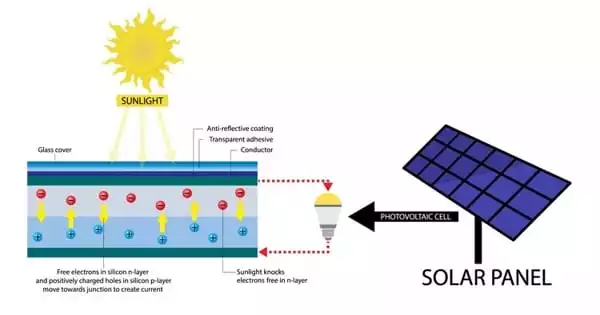Solar energy is naturally more sustainable than fossil fuel energy sources and is better for the environment. It converts the sun’s energy into electrical energy, making use of the world’s greatest and most sustainable resource, sunlight.
It is environmentally sustainable if it does not harm the environment. It simply means that we must first establish an energy balance. Thus, sustainability is defined as “development that meets the needs of the present without jeopardizing future generations’ ability to meet their own needs.” Because the sun’s energy can be used indefinitely without diminishing its future availability, solar energy personifies this definition of sustainability.
Scientists have discovered a new process involving coordination materials that have the potential to accelerate the use of low-cost, Earth-abundant materials that have the potential to transform the energy sector by replacing silicon-based solar panels. Thanks to Newcastle University-led research, technology based on a new generation of hybrid solar cells is one step closer to mass production.
This work demonstrates that fundamental research combining experiments and theory can provide solid scientific grounds to optimize materials and interfaces for renewable energy technologies with real societal impact.
Prof. Ana Belén Muoz-Garcia
An international team of scientists has discovered a new process based on coordination materials that has the potential to accelerate the use of low-cost, Earth-abundant materials with the potential to transform the energy sector by replacing silicon-based solar panels.
The team, led by Newcastle University and including colleagues from Uppsala University in Sweden and the University of Naples Federico II in Italy, developed dynamic dimeric copper complexes using tetradentate ligands and published their findings in the journal Chem (the ligands that bind four donor atoms). These new copper systems provide a novel combination of fast charge transport in a previously unknown two-electron redox mechanism while inhibiting carrier recombination after disproportionation.
The dynamic dimer system ushers in a new era of efficient redox mediators for molecular devices. It has the potential to help power photovoltaic devices with minimal voltage losses and relatively low reorganization energies and recombination rates.

Dr Marina Freitag of Newcastle University’s School of Natural and Environmental Sciences, who co-led the study, stated: “The majority of progress toward the goal of using low-cost and abundant materials has come from the advancement of light-absorbing materials. Charge transfer issues continue to be a barrier to widespread adoption of this solar technology, and this is the problem that our research attempts to solve.”
Prof Ana Belén Muoz-Garcia of the University of Naples Federico II, who co-led the study, stated, “This work demonstrates that fundamental research combining experiments and theory can provide solid scientific grounds to optimize materials and interfaces for renewable energy technologies with real societal impact.”
Each second, the sun releases enough energy on Earth to meet the entire human energy demand for more than two hours. Solar power is an appealing source of energy because it is easily accessible and renewable. Humanity requires energy, and solar power is the ultimate source of energy. The sun has many advantages as a solar energy source: it is abundant, virtually infinite, and accessible to all users.
Because the sun will continue to shine for hundreds of billions of years, it is safe to call solar a truly sustainable power source. The challenge is to figure out how to reduce the cost of going solar as much as possible.
It should hopefully make sense to help the environment while also being economically viable. With advances in solar panel technology and the way electric companies have raised their prices, it is a safe bet that going solar today will save you money. The only question is how quickly and how much you could save.
While the sun is an inherently sustainable energy source, some of the materials used to manufacture solar panels are not. Solar panels are made with rare minerals such as selenium, which will be depleted if solar panel manufacturers continue to extract them at an increasing rate.





